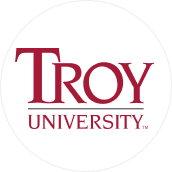• TOEFL
TOEFL Reading: An Introduction to TOEFL Reading Section
2157 Reads
3 min Read
Scared of the TOEFL Reading test? This blog has got you sorted! Read below to learn all about TOEFL Reading- the format, question types, study tips and more. Improve your vocabulary and time management skills so you don’t lose out. Boost your TOEFL scores today.
For many, scoring well in the Reading section of the TOEFL exam can be challenging and cause them to lose precious marks. However, this task is achievable with rigorous practice and a little effort. If meticulously prepared, the Reading section of the TOEFL exam can be the easiest and can fetch a person full marks. Read the blog to understand what the TOEFL Reading test is all about thoroughly.
TOEFL: An Overview
Competency in the English language is a prerequisite for many countries worldwide. Therefore, clearing the TOEFL exam opens a world of opportunities for studying and working in an English-speaking foreign country. Administered by the Educational Testing Service, The TOEFL is a standardized test used to evaluate and assess the English proficiency of non-native speakers. The test is recognized by over 10,000 organizations in 150 countries, including universities, institutes and colleges.The TOEFL test comprise of four integral divisions namely,
| Reading | Tests one’s English comprehension abilities, consisting of 3-4 passages with maximum 14 questions each. |
| Listening | Consists of an audio, based on which questions need to be answered. The audio may include a discussion, dialogue or a conversation. |
| Writing | There are two writing tasks in the section. Based on the reading and listening task, one has to write supporting their opinion. |
| Speaking | It includes 4 tasks, wherein the test-taker must convey their opinion on a specific topic. |
TOEFL Reading Test
Cracking the TOEFL test can initially seem intimidating; therefore, starting strong is always a wise decision to help build your confidence. The exam begins with the TOEFL Reading section, which comprises around 3-4 passages with approximately 13-14 questions each. This makes the total questions range of the section almost 56 questions. The passages are about 700 words long and are primarily excerpts from textbooks. The time allotted may vary from 60 to 80 minutes, depending on the number of passages.
The TOEFL Reading Test aims to evaluate one's understanding of the English language, including vocabulary skills, inference skills and cohesion understanding.
TOEFL Reading: Question types
In the Reading segment, TOEFL questions are of several types. The following are described below-
- Factual Information Questions- This type requires the applicant to recall specific details and information from the passage by carefully analyzing it. Four answer choices are provided, and one must select the correct one. There are two correct answers to specific questions, so both must be marked.
A trick while answering such questions is to look carefully in the passage for the specific word mentioned in the passage.
- Negative Factual Information Questions- For Negative Factual questions, one must find out which of the four options provided is 'False'.
- Inference Questions- Such questions judge one's ability to conclude from the passage. To answer these questions, individuals must establish logical links from facts mentioned in the articles and make assertions based on them.
Inference-style questions are rare in the TOEFL exam. However, one must prepare for them.
- Vocabulary Questions- This question is usually observed in the TOEFL exam. These questions test a person's vocabulary skills and understanding of how words fit into a particular context.
A quick trick that one can follow for these questions is to read a few lines that come before and after the word. Knowing the context makes it easier to comprehend the meaning of the word.
- Reference Questions- One must establish relations and connections between words and phrases to answer these questions. Usually, the question asks what terms like "it" or "this" refers to
To find the answer, try replacing all possible options for the word provided and read the sentence in your mind a few times. The answer option might be correct if the sentence still makes sense when read in the context of the paragraph.
- Insert Text Questions- In this question type, one has to decide if and where a new sentence can fit in the passage in a way that doesn't change the meaning of the passage. Such questions take up much time, so always be cautious while attempting the exam.
- Sentence Simplification Questions- They determine an individual's ability to make sense of a sentence and paraphrase it accordingly. Although such questions are rare in the TOEFL exam, it is always better to practice them beforehand.
- Summary Questions- These questions usually carry 2 to 3 points and appear at the final of every passage. In such questions, a list of six sentences is provided, out of which one must choose the three closest to describe the summary of the passage.
TOEFL Reading- Tips to Remember
Preparing for the Reading section of the TOEFL exam can be tricky, but with the right strategies, tips and tricks, one can achieve high scores. To get the scores of your dreams, read the following tips-
Become an avid reader
A person that reads more always has a higher chance of scoring well in the TOEFL Reading section. One's reading speed matters while giving the TOEFL exam, so practice increasing your speed. However, reading fast without understanding the text is of no use. Engage with the text without merely scanning through it. Habitually read newspapers, magazines or even novels daily to increase your reading speed. The results won't be instant, but gradually you will notice your reading speed and ability to grasp a sentence improving.
Learn the art of Time management
Time is crucial in the TOEFL exam, especially the reading section. Most test takers lose precious marks in the reading section because they do not manage their time properly. It is a fact that the reading section is lengthy and takes time to attempt. So, prepare yourself beforehand. On average, one can spend a maximum of a minute answering each question. This may seem complicated, but with practice, one can execute it.
TOEFL Reading Practice Tests to the Rescue
Taking the help of practice tests is always an intelligent decision. There is no better way to judge your strengths and weaknesses than by taking a practice test. Not only do mock tests give the authentic feel of the exam, but they also help a person improve their time management skills. Time yourselves while taking the mock test to get accurate scores. One can easily find TOEFL Reading practice tests online, so use them!
Enhance your vocabulary
Having a good vocabulary is always a good flex and comes in handy, even more so while giving the TOEFL Reading test. A broad selection of vocabulary will make understanding the passage easier, resulting in quicker, faster and more accurate responses. Take the help of flashcards or even a dictionary to learn new words.
Refrain from dwelling on a topic
Even with thorough practice and learning, there may be a situation when you don't know a particular topic or question or word. The key is not to stress out. Take a deep breath, move on to the next question or passage for the time being, and return to the things left out in the end. Don’t let the situation get the best of you and maintain your calm.
Conclusion
Overall, the TOEFL Reading section tests a person's comprehension and analysis of English texts. The key to acing this section of the test is to understand the test's structure, practice active reading and TOEFL reading practice tests, build your vocabulary, become familiar with the different question types, and review yourself frequently. This blog all the essential information needed about the same.
FAQ
Get great articles direct to your inbox
The latest news, articles, and resources, sent straight to your inbox every month.
Popular Universities to Study Abroad
World class education waiting for you.


Universal College of Learning (UCOL) - Whanganui Campus
Whanganui, New Zealand • 19 Programmes
Tuition Fee : NZD 20500-22500 / year


James Cook University - Singapore Campus
Central Region, Singapore • 41 Programmes
Tuition Fee : SGD 0-0 / year

Roger Williams University - Bristol Campus
Rhode Island, USA • 70 Programmes
Tuition Fee : USD 38000-44000 / year

CBS University of Applied Sciences - Cologne Campus
North Rhine-Westphalia, Germany • 15 Programmes
Tuition Fee : EUR 14580-14580 / year

Study Group - University of Surrey International Study Centre
England, UK • 169 Programmes
Tuition Fee : GBP 4500-18000 / year

Cambrian College - Toronto Campus
Ontario, Canada • 3 Programmes
Tuition Fee : CAD 17000-19000 / year
Popular English Language Proficiency Exams
Blogs and Articles
Curated content to keep you updated on the latest education trends, news and more.
ACT vs. SAT: Which One to Choose?
Updated on • Apr 12,2025 05:40 PM IST • Study Abroad
Updated on • Apr 11,2025 05:53 PM IST • IELTS
Backlog Certificate: A Complete Guide
Updated on • Apr 11,2025 01:47 PM IST • Study Abroad Guidance
PTE Score Chart 2025: PTE Exam Scoring System & Calculation
Updated on • Apr 09,2025 05:37 PM IST • PTE
Master's in Computer Science in the USA
Updated on • Apr 08,2025 05:59 PM IST • USA
Top Trending MBA Specialisations in 2025
Updated on • Apr 08,2025 04:47 PM IST • Study Abroad
Describe Your Hometown IELTS Speaking Part 1 Topic
Updated on • Apr 07,2025 05:50 PM IST • IELTS
How to Get a Job in USA in 2025
Updated on • Apr 07,2025 03:19 PM IST • USA
Highest Paying Jobs in the World
Updated on • Apr 01,2025 05:31 PM IST • Study Abroad
Student Life in Ireland in 2025
Updated on • Mar 29,2025 05:50 PM IST • Ireland
Top Public Universities in Germany
Updated on • Mar 26,2025 04:33 PM IST • Germany
Top Universities for Masters in Ireland in 2025
Updated on • Mar 25,2025 04:36 PM IST • Ireland
Cost of Living in Singapore for Indian Students in 2025
Updated on • Mar 22,2025 11:57 AM IST • Singapore
PTE vs IELTS : Know the Difference and Which is Easier?
Updated on • Mar 21,2025 03:38 PM IST • IELTS
Updated on • Mar 20,2025 10:19 AM IST • Germany
Updated on • Mar 12,2025 11:20 AM IST • Ireland
Updated on • Mar 11,2025 01:18 PM IST • USA
Best Countries to Study Abroad for Indian Students in 2025
Updated on • Mar 08,2025 01:24 PM IST • Study Abroad
Updated on • Mar 05,2025 12:19 PM IST • UK
Fastest Growing Job Sectors in Germany in 2025
Updated on • Feb 28,2025 04:04 PM IST • Germany
Related Blogs and Articles
A little effort to provide an authentic and reliable content for keen readers!!
How can I Master TOEFL Vocabulary?
Updated on • 16-08-2024 • TOEFL
Updated on • 13-08-2024 • TOEFL
TOEFL Accepted Universities in USA
Updated on • 08-07-2024 • TOEFL
How Long is the TOEFL Score Valid?
Updated on • 08-03-2024 • TOEFL
A Guide to Minimum TOEFL Score for Canada Student Visa
Updated on • 12-02-2024 • TOEFL
TOEFL score chart: TOEFL iBT Scores
Updated on • 08-02-2024 • TOEFL
TOEFL Accepted Universities in UK
Updated on • 31-01-2024 • TOEFL
TOEFL Inference Questions: Examples, Tips and Strategies to Answer Inference Questions
Updated on • 12-09-2023 • TOEFL
TOEFL Writing Topics and Tips to Prepare for the TOEFL Exam
Updated on • 01-09-2023 • TOEFL
Types of Questions in TOEFL Speaking Task 1
Updated on • 05-08-2023 • TOEFL
TOEFL Reading Factual Questions: Samples, and Tips for Reading Factual Information Questions
Updated on • 02-08-2023 • TOEFL
TOEFL Preparation: Learn the Best Tips & Strategies
Updated on • 14-07-2023 • TOEFL
TOEFL Listening: An Introduction to TOEFL Listening Section
Updated on • 11-07-2023 • TOEFL
TOEFL or IELTS: Which test should you take to study abroad?
Updated on • 08-07-2023 • TOEFL
TOEFL Reading: Negative Factual Questions
Updated on • 04-07-2023 • TOEFL
Know The Differences Between IELTS and TOEFL!
Updated on • 22-06-2023 • TOEFL
TOEFL Exam Fee in India 2023 : Everything You Need to Know
Updated on • 22-06-2023 • TOEFL
Top Tips to ace Your TOEFL Listening Module
Updated on • 22-06-2023 • TOEFL











